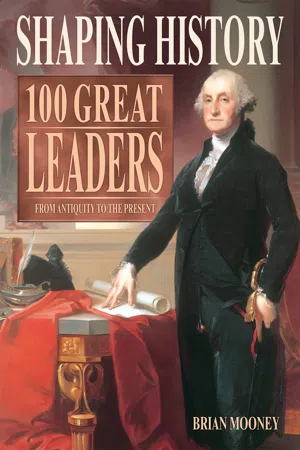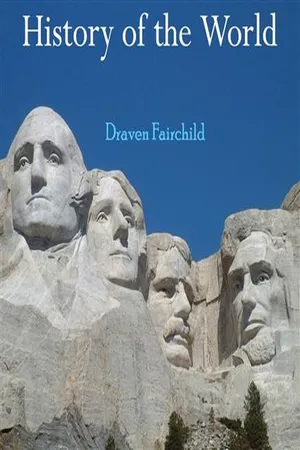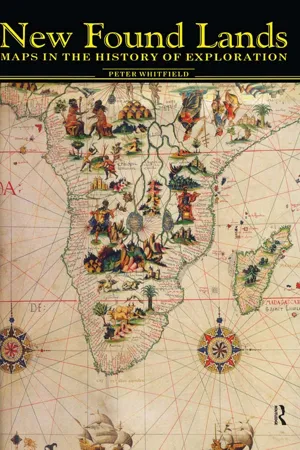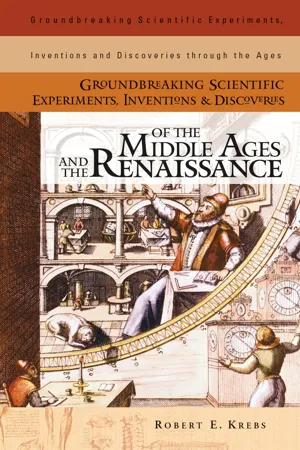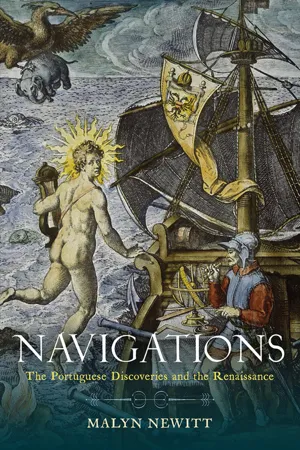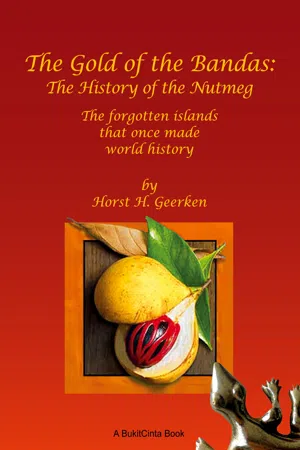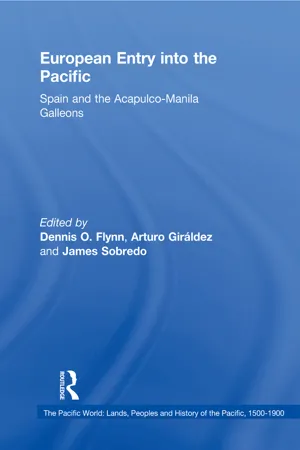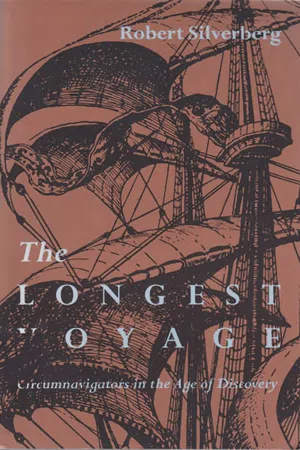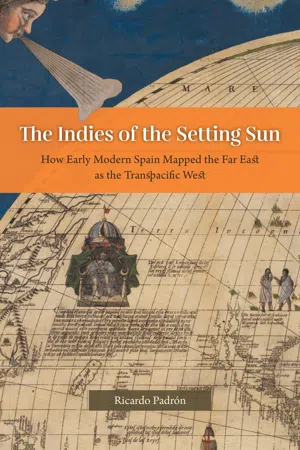History
Ferdinand Magellan
Ferdinand Magellan was a Portuguese explorer who led the first expedition to circumnavigate the globe. In 1519, he set sail from Spain with five ships and eventually reached the Philippines, where he was killed in a battle with local tribes. Although Magellan did not complete the journey himself, his expedition proved that the Earth was round and significantly expanded European knowledge of the world.
Written by Perlego with AI-assistance
Related key terms
1 of 5
9 Key excerpts on "Ferdinand Magellan"
- eBook - ePub
Shaping History
100 Great Leaders
- Brian Mooney(Author)
- 2012(Publication Date)
- Arcturus(Publisher)
San Antonio , Magellan now summoned all his strengths of leadership and courage to drive the fleet on. His men, racked with scurvy and thirst, were reduced to chewing boiled leather and eating rats before they reached Guam on 6 March 1521, their first land for ninety-nine days.Magellan sailed on to the Philippines, becoming the first European to reach the islands, and then foolishly engaged in a local war on behalf of the ruler of Cebu. He was killed by a poisoned arrow while attacking the island of Mactan.Two of his surviving ships continued to the Spice Islands, where they loaded up with valuable cargo, and one of them, the Victoria , completed the circumnavigation of the globe round the Cape of Good Hope, and berthed back in Seville on 9 September 1522. Her cargo of spices alone paid for the expedition, but she had just eighteen European and four Indian survivors.MONTE VIDEO !•The Uruguayan capital Montevideo acquired its name from Magellan’s voyage. The hill on which it was built came into sight as his ship probed the River Plate estuary. ‘Monte video’ (I see a hill), Magellan shouted.•Sailing through the Magellan Strait that is named after him, Magellan’s crew sighted fires burning on the shore. They were lit by native hunters, and the Spanish sailors called the place Tierra del Fuego – Land of Fire.• When Magellan’s fleet emerged into open water, his men were so relieved to find calm sea that they named the ocean ahead of them the Mare Pacifico, the Pacific Ocean.• Magellan’s name in Portuguese is Fernão de Magalhães; in Spanish, Fernando de Magallanes.• An Italian crew member Antonio Pigafetta kept a diary of the entire voyage around the world – a key source of our information on this epic journey.HERNÁN CORTÉS
Hernán Cortés (1485–1547) was a Spanish explorer who led a tiny army that conquered the mighty Aztec Empire in Mexico. His military daring ensured an astonishing victory that inspired others to invade lands in search of riches throughout Central and South America. - No longer available |Learn more
- (Author)
- 2014(Publication Date)
- Learning Press(Publisher)
Among them were explorers Diogo and Duarte Barbosa, Estevão Gomes, João Serrão and Ferdinand Magellan, the cartographers Jorge Reinel and Diogo Ribeiro, the cosmographers Francisco and Ruy Faleiro and the Flemish merchant Christopher de Haro. Ferdinand Magellan—who had sailed in India for Portugal until 1513, when Maluku Islands were reached, and kept contact with Francisco Serrão living there— developed the theory that the islands were in the Tordesillas Spanish area, supported on studies ___________________________ WORLD TECHNOLOGIES ___________________________ by Faleiro brothers. Aware of the efforts of the Spanish to find a route to India by sailing west, Magellan presented them a plan to get there. The Spanish king and Christopher de Haro financed Magellan's expedition. On August 10, 1519, departed from Seville a fleet of five ships—flagship Trinidad under Magellan's command, San Antonio , Concepcion , Santiago and Victoria , the first being a caravel, and all others rated as carracks or naus—with a crew of about 237 men from several nations, with the goal of reaching the Maluku Islands by traveling west, trying to reclaim it under Spain's economic and political sphere. Victoria , the single ship to have completed the first world circumnavigation. (Detail from Maris Pacifici by Ortelius, 1589.) The fleet sailed further and further south, avoiding the Portuguese territories in Brazil, and become the first to reach Tierra del Fuego at the tip of the Americas. On October 21, starting in Cape Virgenes, began an arduous trip through a 373-mile (600 km) long strait that Magellan named Estrecho de Todos los Santos , modern Strait of Magellan. On November 28, three ships ___________________________ WORLD TECHNOLOGIES ___________________________ entered the Pacific Ocean—then named Mar Pacífico because of its apparent stillness. - eBook - ePub
New Found Lands
Maps in the History of Exploration
- Peter Whitfield(Author)
- 2015(Publication Date)
- Routledge(Publisher)
Reaching the Brazilian coast, they moved steadily south probing the bays and estuaries for a possible strait, especially the Rio de la Plata. By April 1520 they halted at 49 degrees south at San Julian, where Magellan quelled a mutiny among his men before settling for four winter months. During this period they saw some Patagonians whose giant stature amazed them and whose pictures were to adorn the maps of this region for centuries. In late August they put to sea and resumed their southward course, until on October 21 Magellan’s ships rounded Cabo Virgenes and ‘We found by a miracle a strait which is a hundred and ten leagues long … and it issues in another sea which is called the Peaceful Sea’. Menaced by icebergs, fogs and reefs, the passage of the strait was long and dangerous, so that even the iron-willed commander wept with joy when they passed Cape Pilar into a calm, open sea. Little guessing the challenge that now awaited them, the fleet, reduced through loss and desertion to three vessels, set a course at first due north to escape the intense cold, then northwest into the ocean whose tranquility prompted Magellan to name it the Pacific. They made good speed running before favourable easterly winds, but if storms were not a threat the unimagined vastness of the Pacific was: for one hundred days they sailed steadily west, sighting only one island which provided neither food nor water. Tortured by starvation and disease, they were compelled to sail onwards, for to turn back in the face of the easterly wind only to reach the desolation of Patagonia was impossible. Above all perhaps was the fear of the unknown: geographical logic told them that the Indies lay ahead, but each new day revealed only the empty ocean, and they were disorientated, alone in a world without maps. Magellan never weakened, but his chosen course was an unlucky one, missing the chains of islands in the southern and central Pacific, and carrying him so far north that he at last found land and fresh supplies on Guam in the Mariana Islands, by which time more than twenty crewmen had died, including the only English sailor in the fleet, Master Andrew of Bristol. Magellan’s choice of this course is mysterious, for while the longitude of the Spice Islands was uncertain, their latitude must have been known to him, and latitude sailing was then the dominant and universal technique of navigation. Magellan’s subsequent actions are also puzzling, for rather than heading directly south for the Moluccas, he continued west to the islands later named the Philippines. It is reported that, while in India many years before, Magellan had employed as his servant a Filipino named Enrique, who had travelled with him constantly, and that on arriving in the Philippines, Enrique thus became the first man in history to circumnavigate the world. During the next few weeks Magellan attempted to evangelize the islands’ inhabitants, became involved in a needless conflict and was killed on the small island of Mactan in April 1521, mourned by his men for his ‘constancy in the most adverse fortune; in the midst of the sea he was able to endure hunger better than we; most versed in nautical charts, he knew better than anyone the true art of navigation, of which it is certain proof that he knew by his genius and his intrepidity … how to attempt the circuit of the globe.’Vatican LibraryPart of Ribero’s World Chart, 1529. This record of Magellan’s great voyage is the only map of the sixteenth century to give a true idea of the vastness of the Pacific – and its emptiness: there is nothing between the Magellan Strait and the Marianas.Sebastian del Cano assumed command of the fleet, and they arrived at last in the Moluccas where they found the long sought-for spices growing in profusion, as well as other delights such as ‘parrots of many kinds, white ones and red ones which are the most sought after, not so much for the beauty of the plumage but because they talk most clearly’. Further trials and a voyage of almost a year lay before del Cano and his men as they turned for home. Only one ship, the Vittoria was fit to sail, and hoping to avoid the hostile Portuguese they shaped a course by Timor and crossed the Indian Ocean far to the south of the Portuguese routes. After circumnavigating the whole of Africa, they fell foul of the Portuguese at Cape Verde, and on 22 September 1522 the Vittoria - eBook - ePub
- Robert E. Krebs(Author)
- 2004(Publication Date)
- Greenwood(Publisher)
(This was several years after Columbus’s westward trip to find a passage to the East going the other direction.) Vasco da Gama sailed up the east coast of India to Calcutta in 1498, which, in a sense, completed the goal of Prince Henry to find a sea route to compete with the overland trade. This was the first trip that lasted long enough to cause death to most of the crew as a result of scurvy. • Ferdinand Magellan (1480–1521) was a Portuguese navigator whose fleet of five ships set out on a round-the-world ocean exploration in 1519. Because Spain funded his expedition, Portugal tried to prevent his trip. He eventually set sail westward to find a southern passage to the riches of the Spice Islands, a goal that had evaded Columbus about 25 years earlier. Magellan knew that he must pass the unexplored southern tip of the South American continent, but this was more of struggle than he had anticipated. It required several weeks during storms and high seas to slowly and cautiously pass through these treacherous straits, now called the Strait of Magellan. After passing the tip of South America he entered the open, calm, great new body of water that he named Pacific, which means “peaceful” or “calm.” It was much larger than he expected, and his fleet sailed for four weeks without sighting land. Many of the crew were in the process of dying of hunger when they finally landed on an island, present-day Guam. After securing food, they continued to the Philippine Islands where natives attacked the party. Magellan died from wounds received in this battle in 1521. The exploration continued westward. Only one of the original five ships, the Victoria, and only 18 men under the command of Juan Sebastian de Elcano made the return trip to Spain in 1522. They managed to arrive with enough spices to pay for the trip and to make a profit. Spain soon gave up the Spice Islands for the more lucrative adventures of collecting Inca gold in the New World - eBook - ePub
Navigations
The Portuguese Discoveries and the Renaissance
- Malyn Newitt(Author)
- 2023(Publication Date)
- Reaktion Books(Publisher)
8
MAGELLAN: THE NAVIGATOR AS EPIC HERO
A great change came over the civilisation of the Renaissance in about the year 1500. This is no longer a world of free and active men, but a world of giants and heroes . . . To the humanist virtues of intelligence was added the quality of heroic will. For a few years it seemed that there was nothing which the human mind could not master and harmonise.KENNETH CLARK , Civilisation1I t seems now almost inevitable that the period of the Renaissance, in which the appreciation of classical literature was reborn and the seas of the world were explored for the first time, should have produced its own counterpart to the Odyssey of Homer, its own great maritime epic. For it is only in this way that the great voyages of Vasco da Gama and Ferdinand Magellan can be fully understood. These voyages are two of the most significant events that contributed to a new scientific understanding of the world and at the same time they set in motion a process that was to enable the states of western Europe to dominate the maritime spaces of the world and ultimately the world economy up to the twentieth century.Vasco da Gama and Magellan’s Voyages as Epics
The facts of the two voyages are well enough known and have often been recounted, but factual accounts alone do not seem to be sufficient for an understanding of the human dimension and writers have turned to epic literature fully to explain their significance. Epics, it has been argued, are the form of cultural expression typical of a society ‘dominated by a powerful and warlike nobility, constantly occupied with martial activities, whose individual members seek, above all, everlasting fame for themselves and for their lineages’.2 - No longer available |Learn more
The Gold of the Bandas: The History of the Nutmeg
The forgotten islands that once made world history
- Horst H. Geerken(Author)
- 2021(Publication Date)
- Books on Demand(Publisher)
The Spanish King Charles V recognised Magellan’s abilities and gave him command of a fleet of five ships. His mission was to find a passage to the Pacific and the Banda Islands. The expedition was financed by the Spanish Crown, a Spanish shipping company and – as with the Portuguese expedition – the Fugger bank in Augsburg. At that time the Fugger bank had achieved global prominence.The voyage began in August 1519. Magellan was Admiral and captain of the flagship Trinidad . The crews were mainly Spanish, but there were also Portuguese, Italians, Frenchmen, Germans, Greeks, and a Malay slave as interpreter in the multicultural mixture. The fleet took on supplies in the Canaries. At the latitude of the Cape Verde Islands they used the trade winds to reach the South American coast. They crossed the Equator and reached the coast of Brazil on the 6th of December 1519. They worked their way slowly and carefully south down the coast in order not to miss the passage to the Pacific. When they arrived in Patagonia, it was winter in the Southern Hemisphere, and so from March onwards they overwintered in the sheltered bay of Puerto San Julián (so named by Magellan). Here, there was a mutiny, because the daily rations had been cut and some of the crew wanted to return to Spain. The miscreants were hanged and calm was restored. In August 1520 Magellan left his winter quarters. A good year after setting sail from Europe, in October 1520, he found the passage through to the Pacific, through the strait that is now named after him. One of the ships refused to accept Magellan’s orders and sailed back to Spain.Magellan naturally had no idea of the dimensions of the vast Pacific Ocean and he sailed westwards through the warm waters, driven by the prevailing wind. After three months on the open sea, the food supplies began to run out. The sailors ate the crumbs of the ship’s biscuits, sawdust, rats and strips of water-softened leather. After three months and twenty days on the open sea, during which they only saw two tiny uninhabited atolls, they reached the Mariana Islands at the beginning of 1521. At least 19 sailors had died of hunger and disease on the voyage. Now they could collect food supplies and fresh water. - eBook - ePub
European Entry into the Pacific
Spain and the Acapulco-Manila Galleons
- Dennis O. Flynn, Arturo Giráldez(Authors)
- 2017(Publication Date)
- Routledge(Publisher)
(vol. 3, Fernando de Magallanes, includes a very useful biography, bibliography, and reprinting of documents and extracts from early historians, as well as a few "new" documents); George E. Nunn: "Magellan's route in the Pacific," Geogr. Rev., vol. 24 (4), pp. 615-633, New York, 1934 (a stimulating discussion, with good listing of basic sources); Stefan Zweig: Magellan, pioneer of the Pacific, London, 1938, 311 pp. (original German edition... Magellan, dermann und seine tat, Wien, 1938, 370 pp.) is romantic and personalized; Visconde de Lagôa:. . . Fernão de Magalhãis..., Lisboa, 1938, 2 vols, (the most scholarly study of Magellan to date; vol. 1 contains the life of Magellan and vol. 2 is a detailed study of the voyage based on all known sources); Enrique Ruiz-Guiñazú: Proas de España en el mar magallánico, Buenos Aires, 1945, 170 pp. (a partisan pro-Elcano text primarily concerned with Argentine waters and with Spanish discovery of the Falkland Islands but useful for the map reproductions); Amando Melón y Ruiz de Gordejuela; "Los primeros tiempos de la colonización. Cuba y las Antillas. Magallanes y la primera vuelta al mundo," Historia de América, vol. 6, pp. 1-748, Barcelona, 1952 (typical of the pro-Elcano nationalistic school of writers); Charles McK. Parr: So noble a captain; the life and times of Ferdinand Magellan, New York, 1953, 423 pp. (romantic and pro-Magellan, with a list of Magellanic transcriptions from the Archivo General de Indias, Sevilla). 17. Probably three-masted two-decked ships, square rigged (veins redondas) on the foremast and mainmast, and triangular-rigged (vela latina) on the mizenmast. As implied in note 7, there is no contemporary description or representation of the Victoria or of any of the other sailing ships. The ships depicted on various charts, such as the one by Ribero in 1529, are generalized inventions of the cartographer. 18. It is impossible to convert these tonnages accurately into modern tonnages [note 8] - eBook - ePub
The Longest Voyage
Circumnavigators in the Age of Discovery
- Robert Silverberg(Author)
- 2020(Publication Date)
- Ohio University Press(Publisher)
Juan Serrano, though, did not feel competent to undertake the quest of the Moluccas. He nominated instead his cousin, Ferdinand Magellan, who—next to his own brother Francisco Serrão—was the man most familiar with Moluccan waters. The nomination was seconded by Barbosa’s son, Duarte, who had known Magellan well in India. The elder Barbosa proposed Magellan’s name to Bishop Fonseca, who knew nothing at all of Magellan but who was willing to accept Barbosa’s recommendation. It was time now to let Magellan know of all this: Duarte Barbosa, who, like his father, had been living in Spain, made a secret visit to Oporto to find out if Magellan would accept the assignment. Magellan, of course, accepted most readily, making only the stipulation that his friend, the wild-eyed astronomer Ruy Faleiro, be taken into the project as an equal partner. Duarte Barbosa, aware of Faleiro’s high reputation as an astronomer and unaware of his personal eccentricities, agreed to this and told Magellan to come to Seville as soon as possible to consummate the arrangement. The expedition was not yet a certainty; Fonseca, powerful as he was, would have to win the backing of King Charles and certain Spanish officials before the ships could go to sea, and there was also the little matter of financing the venture. But the prospects were good. In the autumn of 1517, Magellan, accompanied by his Malayan slave Henrique, left Portugal behind forever and took ship for Spain.Bishop Fonseca was not the only great man of his day interested in finding the western route to the true Indies, though. The wily Cristóbal de Haro, Portuguese agent for the vast Fugger interests, had independently been seeking the same thing since the turn of the century; and now, when all roads suddenly led to Spain, Haro’s schemes and Magellan’s destiny converged.Haro, though a Spaniard, had been the Fugger man in Lisbon since 1486. He had not been able to win a place in the social life of King João II’s court, probably because he came from a family of Christianized Jews, but his skill as a financier had given him access to the inner circles of the Portuguese administration. Haro had invested Fugger money in the early voyages to Africa and around the Cape of Good Hope and had been consolidating his position when João II died in 1495. Under King Manoel, Haro’s situation had been more precarious; at first excluded from influence by Florentine rivals, he had regained his earlier importance by the sheer power of Fugger gold. Not only did Haro and the Fuggers underwrite the costs of the royal spice fleets, but they developed their own export-import organization, with fifteen swift square-rigged naos - eBook - ePub
The Indies of the Setting Sun
How Early Modern Spain Mapped the Far East as the Transpacific West
- Ricardo Padrón(Author)
- 2020(Publication Date)
- University of Chicago Press(Publisher)
3Pacific Nightmares
On November 28, 1520, the fleet commanded by Ferdinand Magellan exited the strait that now bears his name and entered the waters of what he himself christened the Pacific Sea. Having discovered the maritime passage through the New World, Magellan believed he had met the most difficult challenge facing his expedition, and that the Spice Islands, his ultimate objective, could not be more than a few weeks away, across a relatively narrow ocean dotted with islands potentially rich in spices, gold, silver, and precious stones. Yet rather than island-hop his way to the Spicery in short order, he found himself sailing for months across vast tracks of featureless ocean, encountering only two desolate, uninhabited islets along the way. The ships did not make any significant landfall until March 6, 1521, when they raised an island in the Marianas group, most likely Guam, the crew starving, thirsty, and wracked by scurvy. Eighteen months later, the expedition’s sole surviving vessel, the Victoria, limped into Seville carrying a cargo of cloves and a small group of emaciated survivors, the expedition’s commander lost in combat with the indigenous inhabitants of what would later come to be known as the Philippines. It brought the surprising news that the ocean between the New World and the Spicery was much broader and emptier than anyone had expected it to be.The historiography of exploration often identifies this revelation as Magellan’s “discovery of the Pacific,” and argues that it had a significant impact on European ideas about the world’s geography (Bourne 1904, 132; Basch et al. 1962, 248; Parry 1974, 258; Morison 1971, 2.466). Simply put, the discovery of the Pacific made it more difficult to believe that what we call North America was part of Asia, and thus it helped consolidate the invention of America. In making this argument, historians of exploration and discovery often point to the surviving manuscript planispheres produced during the 1520s at Seville’s Casa de la contratación, utilizing privileged information drawn from the logbooks of the Magellan expedition, which the crown did not allow to circulate outside official circles.1 A large empty space opens up west of the New World on these charts, testifying to the surprising distance that the fleet had to sail to reach the Spicery from the Strait of Magellan, and presumably, to the uncharted dimensions of the Pacific Ocean. The distance ranges from 120° of longitude between Peru and the Spicery on the anonymous planisphere of 1523, to 130° on the famous 1529 planisphere by Diogo Ribeiro, but it is invariably greater than the distance that had appeared on any previous map, even those made in Seville (see fig. 7 ).2 Historian J. H. Parry lauds this particular planisphere for its apparent “completeness,” and he offers it as an example of how the discovery of the Pacific brought “received ideas” about the world’s geography, most of them stemming from Ptolemy, crashing to the ground (1974, 260).3
Index pages curate the most relevant extracts from our library of academic textbooks. They’ve been created using an in-house natural language model (NLM), each adding context and meaning to key research topics.
